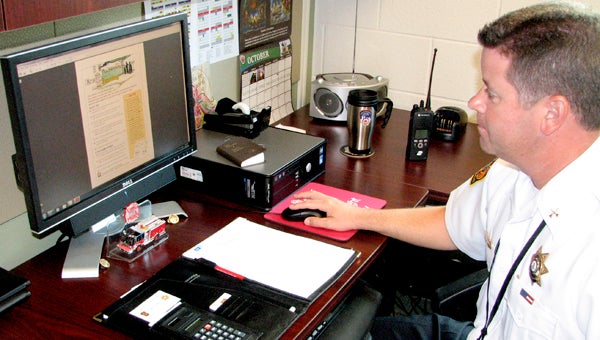Planning that can save your life
Published 9:26 pm Tuesday, October 5, 2010

Suffolk Fire Marshal Captain James Dickens shows readers where they can access helpful tips and resources to create a fire escape plan for their home. Visit www.nfpa.org. Click “safety information” in the large, blue tool bar. Click the first box that says “for consumers: safety tips and fact sheets.” On the left hand-side menu, click “escape planning,” the fourth option from the top. You can also search “escape plan” for more results.
EDITORS NOTE: This is the second in a series of stories commemorating National Fire Prevention Week 2010. For more information on fire safety and prevention, visit www.nfpa.org.
Most people plan for things like vacations, Friday night and what they’ll wear to work the next day to save time, inconvenience or money.
Having a fire escape plan is planning that can save your life.
This year’s theme for fire prevention week is “Smoke alarms: A sound you can live with.” When that alarm goes off, a plan will make sure you know what to do next.
“You need to plan for a fire before it happens,” said Suffolk Fire Marshal, Capt. James Dickens. “Do not wait to put together your plan. It is a vital component of surviving a house fire.”
According to the U.S. Fire Administration, 86 percent of all fire-related deaths and 77 percent of all-fire related injuries were caused by home fires. There were nearly 400,000 residential fires with a resulting 2,500 deaths and 13,000 injuries in the United States in 2009.
Knowing how to get out of the house during a fire could make all the difference.
The National Fire Prevention Association recommends gathering everyone in the house and making a plan by walking through the house, locating all exits and escape routes. Households with children should consider drawing a floor plan of the home, marking two ways out of each room. Also, mark the location of each smoke alarm.
“Every single room needs two ways out,” Dickens said. “There aren’t always two doors, so use a window.”
Make sure your plan allows for any specific needs in your household, such as disabled family members or pets.
The NFPA recommends practicing the escape plan at least twice a year. While practicing, remind family members to feel the doorknob. If it is hot, they should use their second exit instead. If there is smoke on the way out, stay as close to the floor as possible and move quickly.
Once outside, everyone should be able to find the family meeting area.
“Children need to know how to get out and get to where they need to be, even in the confusion,” Dickens said. “The quicker everyone can get there the better. It’s vital for us and for them to know as soon as possible if anyone hasn’t been able to get out in the case of a real fire.”






